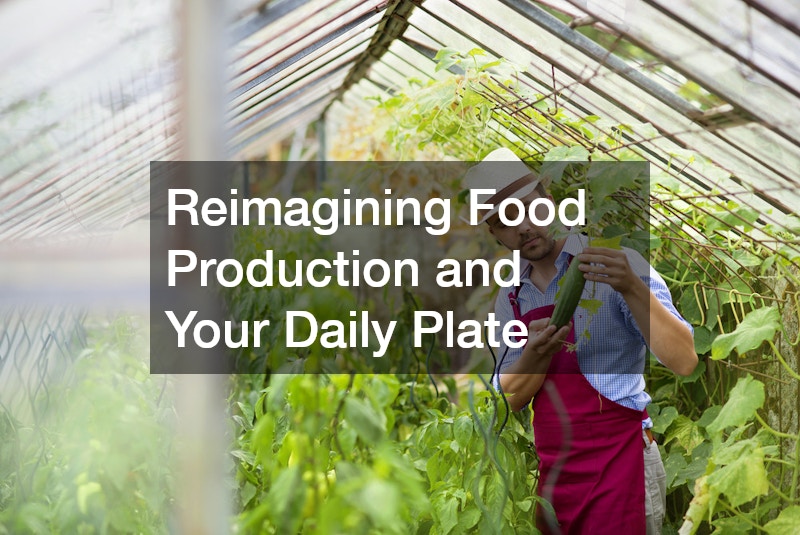
Sustainability has grown far beyond the realm of corporate initiatives and large-scale environmental campaigns. Today, personal sustainability is a vital and achievable goal for individuals seeking a healthier, more intentional, and eco-conscious life. Personal sustainability is about making mindful daily choices that benefit not only ourselves but also our communities and the planet. While the idea may seem overwhelming at first, integrating sustainability into your life doesn’t require drastic change. In fact, small, consistent actions can lead to a major impact over time.
From minimizing waste and reducing energy consumption to prioritizing wellness and supporting local businesses, every aspect of our lives offers opportunities to be more sustainable. Personal sustainability also involves improving the systems and routines that influence our health, energy, comfort, and wellbeing. Whether you’re a busy professional, a parent, or a student, you can find realistic ways to grow your personal sustainability every day.
This blog introduces fresh ideas to help you live more sustainably on a personal level. These concepts extend beyond the obvious practices of recycling and using reusable bags. We’ll dive into areas like energy efficiency, health and wellness, fitness, food systems, local transportation, and mindful consumption. We’ll also explore how service providers and innovative technology can support your journey toward sustainable living.
Through each section, you’ll find ideas grounded in everyday life, designed to help you stay committed without feeling overwhelmed. These ideas empower you to make meaningful changes that align with your values, habits, and lifestyle. The goal is not perfection but progress—because every effort counts when it comes to personal sustainability.
1. Reimagining Food Production and Your Daily Plate

Many people don’t realize how much of an impact their food choices have on the environment and personal sustainability. One of the most direct ways to shift toward a more sustainable lifestyle is by reconsidering how your food is produced and where it comes from. Supporting local farmers or investing in a commercial greenhouse membership can significantly reduce your carbon footprint. Greenhouses use less water and can produce crops year-round without relying on long-distance transportation.
Fresh, local produce also offers more nutrients and fewer preservatives, benefiting your health and aligning with your goals for personal sustainability. You can start small by visiting farmers’ markets or even growing herbs at home. More advanced options include subscribing to greenhouse deliveries or partnering with a community-supported agriculture program. Choosing plant-forward meals a few times a week can further reduce your environmental impact while promoting personal wellness.
As more people become aware of their food’s origin, growing interest in sustainable agriculture and indoor farming rises. By supporting a commercial greenhouse or creating your own mini-version at home, you actively participate in an evolving food system that’s healthier for people and the planet.
2. Airflow and Energy Efficiency in the Home
A lesser-known yet impactful part of home energy efficiency lies in how we manage ventilation. A conservation vent, for example, plays a crucial role in maintaining airflow and reducing energy loss. This small adjustment can be an integral component in improving household efficiency and contributing to your personal sustainability.
By regulating temperature and improving air quality, conservation vents help your home stay comfortable year-round without overworking your heating or cooling systems. The reduction in energy usage not only saves money but also reduces your overall carbon emissions. It’s one of those behind-the-scenes upgrades that quietly supports sustainability.
Every home is different, so it’s worth exploring how your space manages air circulation and insulation. Combine conservation vent technology with habits like sealing gaps, insulating windows, and installing ceiling fans to make your space more eco-friendly. In doing so, you’re not just improving comfort—you’re taking proactive steps toward personal sustainability.
Making these adjustments can also extend the life of HVAC systems, another indirect way to reduce resource waste. All in all, airflow is more than just a matter of comfort; it’s a critical element in any sustainable household.
3. Healthier Smiles, Healthier Choices
Oral health is a frequently overlooked area in the conversation around personal sustainability. However, building long-term health through consistent dental care reduces the need for emergency treatments and preserves natural teeth longer—minimizing the use of additional materials and resources. Regular visits to the dentist can help you take proactive care of your well-being, ensuring minor issues don’t escalate into costly and wasteful procedures.
Preventative care is a form of sustainability for your body. Brushing and flossing might seem routine, but these habits contribute to systemic health and overall resilience. In fact, many health issues are linked to poor oral hygiene, including cardiovascular disease and diabetes. By sustaining your health through daily dental care and consistent check-ups, you’re investing in a more sustainable lifestyle.
Consider switching to bamboo toothbrushes and natural toothpastes to minimize plastic waste. Even choosing dental offices that adopt eco-conscious practices supports the broader concept of personal sustainability. While your smile might be the immediate benefit, the ripple effects reach much further.
4. Keeping Unwanted Guests Out Naturally

Reducing the use of harsh chemicals in your home is another great step toward personal sustainability. Many people turn to a pest management service when dealing with unwanted invaders, but not all services are created equal. Choose providers that use environmentally responsible treatments and strategies to minimize harm to your home and the surrounding ecosystem.
An integrated approach that targets root causes—like sealing entry points, eliminating food sources, and using botanical-based solutions—is both safer and more sustainable. By avoiding over-reliance on chemical sprays, you protect your family, pets, and local wildlife. Modern pest management service providers now offer more advanced, sustainable methods that align with both comfort and conservation.
A pest-free home doesn’t have to come at the expense of the environment. Prioritizing eco-friendly pest control is another example of how simple choices can contribute to long-term personal sustainability. After all, a healthy, balanced home environment supports not just your comfort but your overall wellness and peace of mind.
5. Rethinking Transportation for Short Trips
While most conversations about sustainable transport revolve around public transit and electric vehicles, don’t overlook the value of local solutions. Using local golf carts for short trips around neighborhoods, small towns, or gated communities can reduce reliance on gas-powered vehicles. These compact vehicles consume less energy and produce fewer emissions, making them an accessible part of your personal sustainability plan.
Local golf carts are especially useful in communities that prioritize walkability and green living. Some cities even encourage the use of golf carts on designated roads, blending mobility with eco-conscious thinking. With added convenience and lower maintenance costs, these carts offer a smart and sustainable alternative for everyday travel.
By adopting this method of short-distance travel, you decrease wear and tear on larger vehicles and reduce your fuel consumption. For communities already embracing solar-powered carts or shared cart programs, the shift toward sustainable living becomes even more tangible. It’s a small but significant change that adds up over time.
6. Shifting Daily Energy Habits
Many people underestimate how daily energy habits shape their personal sustainability. From leaving lights on to running appliances during peak hours, small oversights can lead to significant waste over time. The good news? Small changes can lead to big savings and better sustainability outcomes.
Turning off lights when you leave a room, unplugging unused electronics, and running laundry or dishwashers during off-peak hours are simple ways to reduce energy consumption. Investing in smart power strips, motion-sensor lighting, or programmable thermostats adds another layer of energy consciousness.
These habits help cut down on utility bills and lower your overall carbon footprint. Consistency is key—once sustainable energy habits become part of your routine, they require little thought but yield long-term rewards. By taking responsibility for your energy use, you take ownership of your role in the broader sustainability landscape.
Incorporating these small shifts into your daily life ensures that personal sustainability remains an achievable and practical goal.
7. Making Room for Greener Energy Sources

Installing EV charging installation stations at home is not just for tech enthusiasts anymore. As electric vehicles become more mainstream, adding an EV charger to your garage or driveway is a forward-thinking way to support personal sustainability.
EV charging installation not only makes it more convenient to charge your vehicle but also supports the broader shift toward cleaner transportation. It pairs perfectly with solar panel systems or time-of-use energy plans, amplifying its impact on your household’s carbon footprint.
As electric vehicles replace internal combustion engines, your ability to power your car with cleaner energy directly supports global sustainability goals. But it’s more than just about the car; it’s about changing the entire energy system of your household to reflect environmentally conscious values.
For renters or those without home installation options, pushing for community chargers or choosing residences with charging access can still move the needle. Any investment in infrastructure that supports clean energy is a meaningful step toward personal sustainability.
8. Rethinking Comfort Without Compromise
Home climate control has come a long way from wasteful thermostats and leaky ducts. Partnering with an HVAC company to audit and upgrade your system can greatly enhance your energy efficiency while maintaining year-round comfort. This investment supports personal sustainability by reducing energy waste and long-term operational costs.
Smart thermostats, zoned HVAC systems, and high-efficiency units make it easier than ever to align your comfort with your values. Regular maintenance from a professional HVAC company ensures that your system is running at optimal performance, eliminating energy leaks and extending the life of your system.
While the upfront costs might be higher, the savings over time and the environmental benefits make it a wise choice. Many providers now specialize in sustainable heating and cooling solutions, giving you more options to build a greener home. These adjustments show how technology and lifestyle choices can work together to make personal sustainability both easy and comfortable.
9. The Role of Water in Your Daily Routine
We often overlook water when thinking about sustainability, but how we source and consume it matters. Opting for home water delivery from a trusted service that emphasizes reusable containers and local sourcing can significantly support personal sustainability.
Home water delivery reduces dependence on single-use plastic bottles, cutting down on waste and pollution. Many companies now offer glass or BPA-free refillable containers, ensuring your hydration habits remain healthy and responsible. Water that is locally sourced also requires less transportation, reducing emissions.
Choosing this sustainable option also encourages more conscious consumption overall. With set deliveries and limited waste, you’re more likely to use your water thoughtfully and reduce unnecessary waste. Over time, these small actions help shift habits toward better resource management—a critical pillar of personal sustainability.
10. Creating a Home That Supports Your Values

Our homes reflect our habits. From energy use to materials chosen for repairs, every decision impacts sustainability. Even routine maintenance like electrical repair offers an opportunity to make greener choices.
Sourcing environmentally responsible materials and ensuring that electrical repair is done efficiently reduces energy leaks and increases safety. Professional technicians can help you optimize lighting systems, switch to energy-saving bulbs, and eliminate phantom loads from outdated wiring.
These upgrades not only save money but also contribute to your personal sustainability journey. Thoughtful home management ensures that your environment supports rather than hinders your goals. Repair doesn’t have to mean resource-heavy; it can be a stepping stone to greater environmental awareness.
11. Wellness as a Foundational Practice
True sustainability isn’t just about the environment; it includes physical and mental well-being. Crafting a custom wellness plan with a health provider ensures you’re addressing diet, exercise, sleep, and stress management—all of which support longevity and vitality.
By focusing on whole-body health, you reduce the chances of chronic illness and the need for ongoing medication or intervention, both of which strain environmental and financial resources. A solid wellness plan integrates sustainable practices like plant-based diets, mindfulness, and preventative care.
Aligning your health goals with eco-conscious values allows you to thrive while reducing your footprint. A tailored approach also supports motivation and accountability, which are key for long-term personal sustainability. Living well and living green can go hand in hand.
12. Making Movement a Daily Ritual
Physical activity has a direct link to sustainability—not just in health, but in how we structure our days and use resources. Joining a fitness club can be more than a commitment to your health; it can be a pillar of your sustainable lifestyle.
Many fitness clubs now emphasize green building practices, energy-efficient equipment, and wellness-focused programming. Group classes foster a sense of community, reducing the isolation that can come from solo health efforts. Walking or biking to the club adds another layer of sustainability.
From reducing car trips by combining errands with workouts to engaging in community clean-up events hosted by clubs, your membership can be an opportunity for personal sustainability. Even indoor workouts minimize reliance on high-energy electronics at home.
Finding physical movement you enjoy ensures consistency. Over time, the commitment to daily activity supports resilience, mental health, and eco-conscious living. It’s not just about looking good—it’s about feeling good while living responsibly.
Growing your personal sustainability doesn’t require radical lifestyle changes or extreme sacrifices. Instead, it thrives on awareness, intentionality, and consistency. From managing energy consumption to improving health and supporting eco-friendly services, every small decision builds on itself.
This blog explored a wide range of ways to incorporate sustainability into everyday life. Whether it’s choosing local transportation options like golf carts, supporting a commercial greenhouse, or developing a long-term wellness plan, each action strengthens the foundation of your personal sustainability.
By embracing a mindset that values thoughtful consumption and responsible resource use, you position yourself as part of a global movement toward a healthier planet. Even tasks like scheduling electrical repair, updating HVAC systems, or switching to home water delivery offer ways to align convenience with conscience.
In the end, personal sustainability is less about perfection and more about progress. The cumulative effect of small, smart choices makes a meaningful difference. Commit to just a few new practices this month, and you may be surprised at how natural sustainable living becomes. When your daily actions reflect your values, you help create a world where both people and the planet can thrive.
Francis Pitt
Latest posts by Francis Pitt (see all)
- 10 Ways to Advance Your Families Overall Wellness - November 17, 2025
- Fresh Ideas to Grow Your Personal Sustainability Every Day - July 11, 2025
- Custom Menus and Dietary Options Offered by Catering Services - June 25, 2025